Maybe you just got back from breakfast or brunch, or maybe you've always wondered: how do restaurants make hash browns so good? I've been making them for many years in restaurants and I have lots of tricks to share. In this post you'll learn to make fresh or frozen hash browns from scratch at home. Read on and I'll share my secrets.
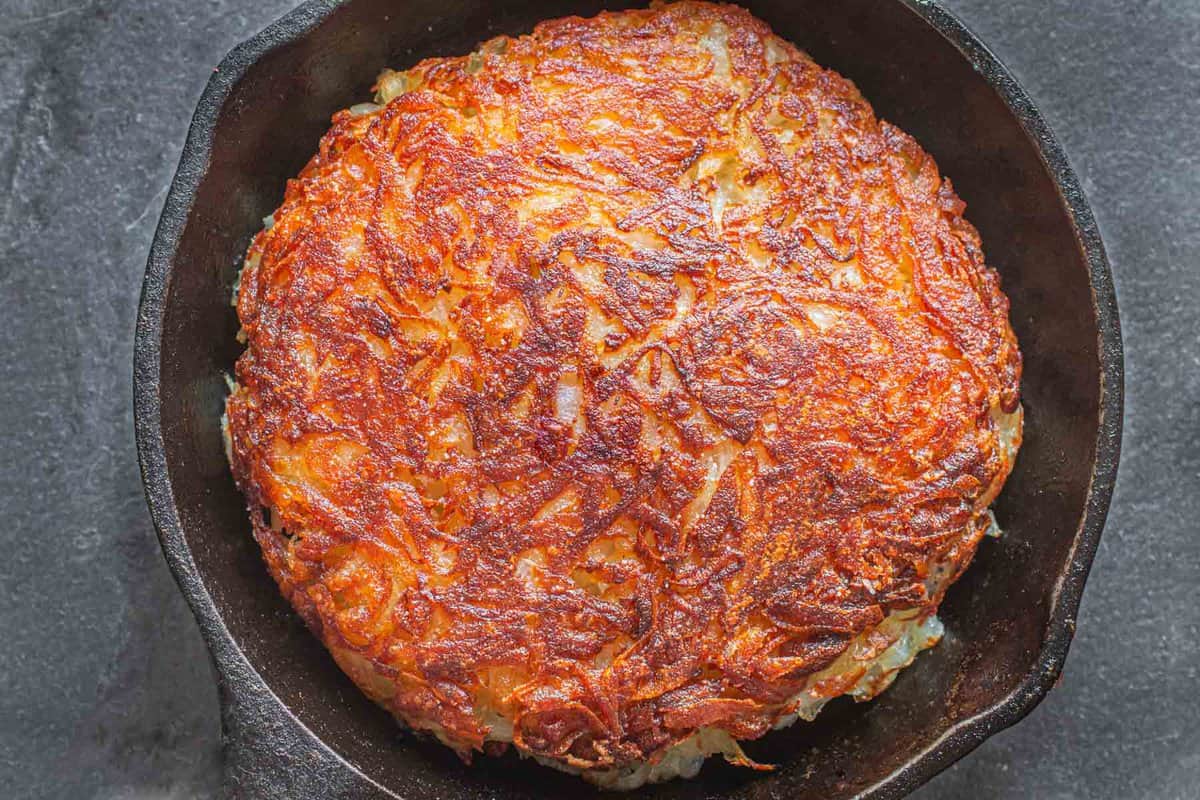
Most restaurants probably don't even make their own hash browns as they can avoid the labor and buy a frozen bag of shredded potatoes. Essentially, my recipe is going to give you the same thing as frozen hashbrowns.
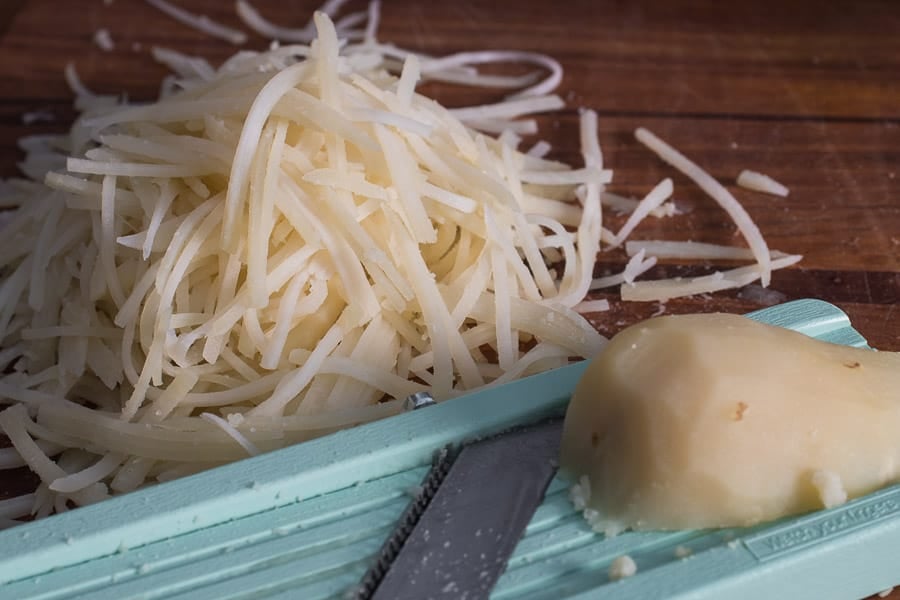
The secret for the crispiest hash browns and other breakfast potatoes is par-cooking.
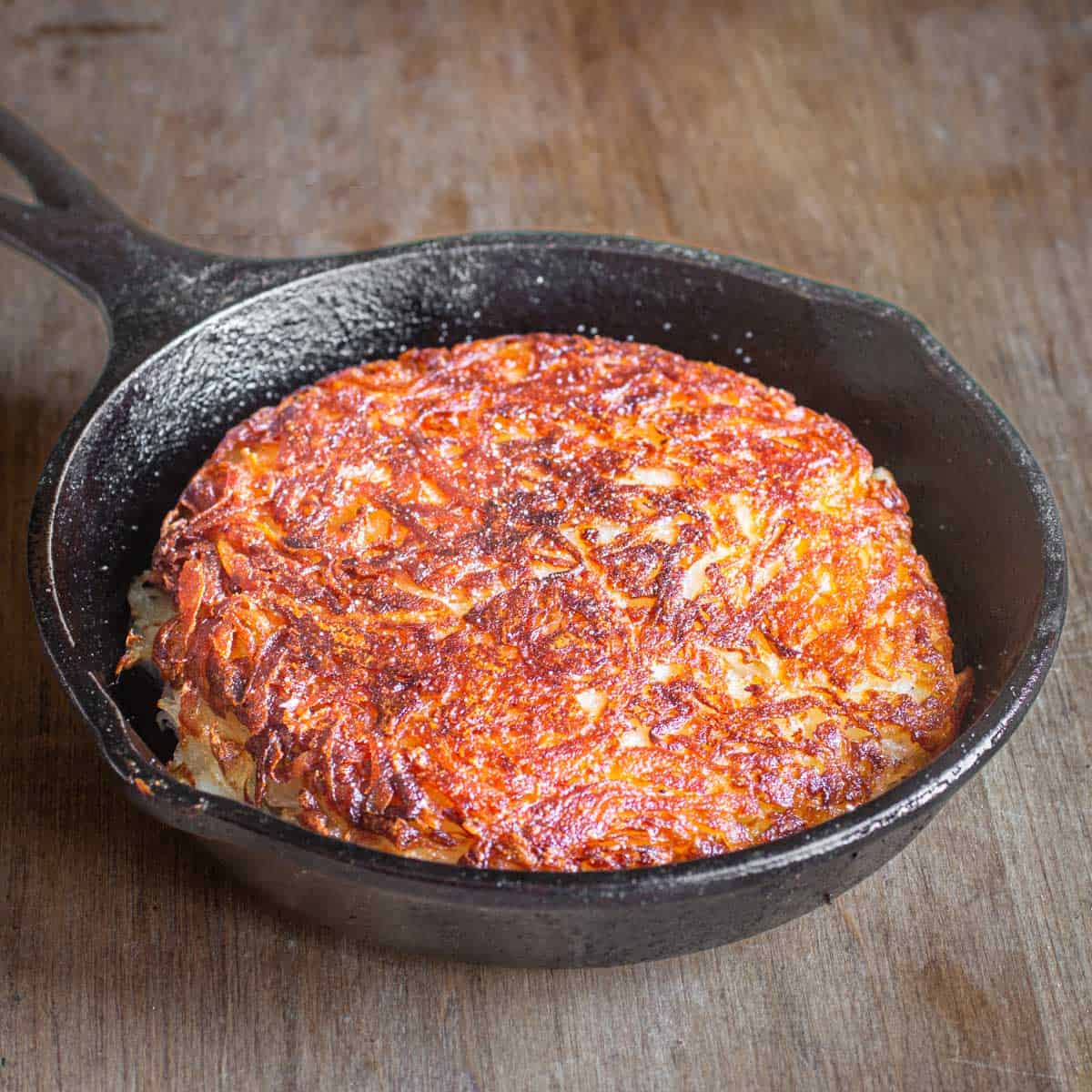
How to Make Hash Browns from Scratch on the Stove
First the potatoes are put into a pot and covered by at least two inches of water. The images below describe the process.
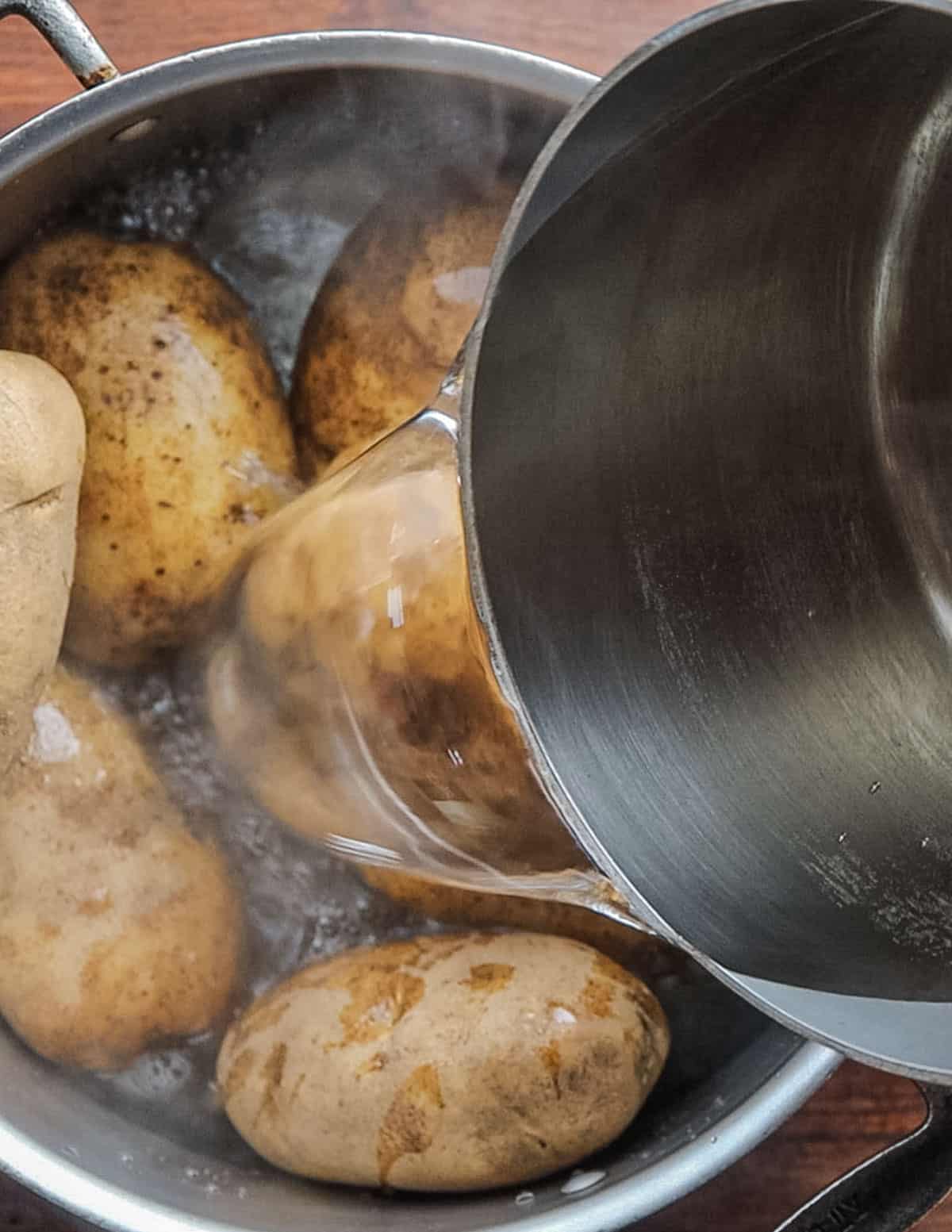
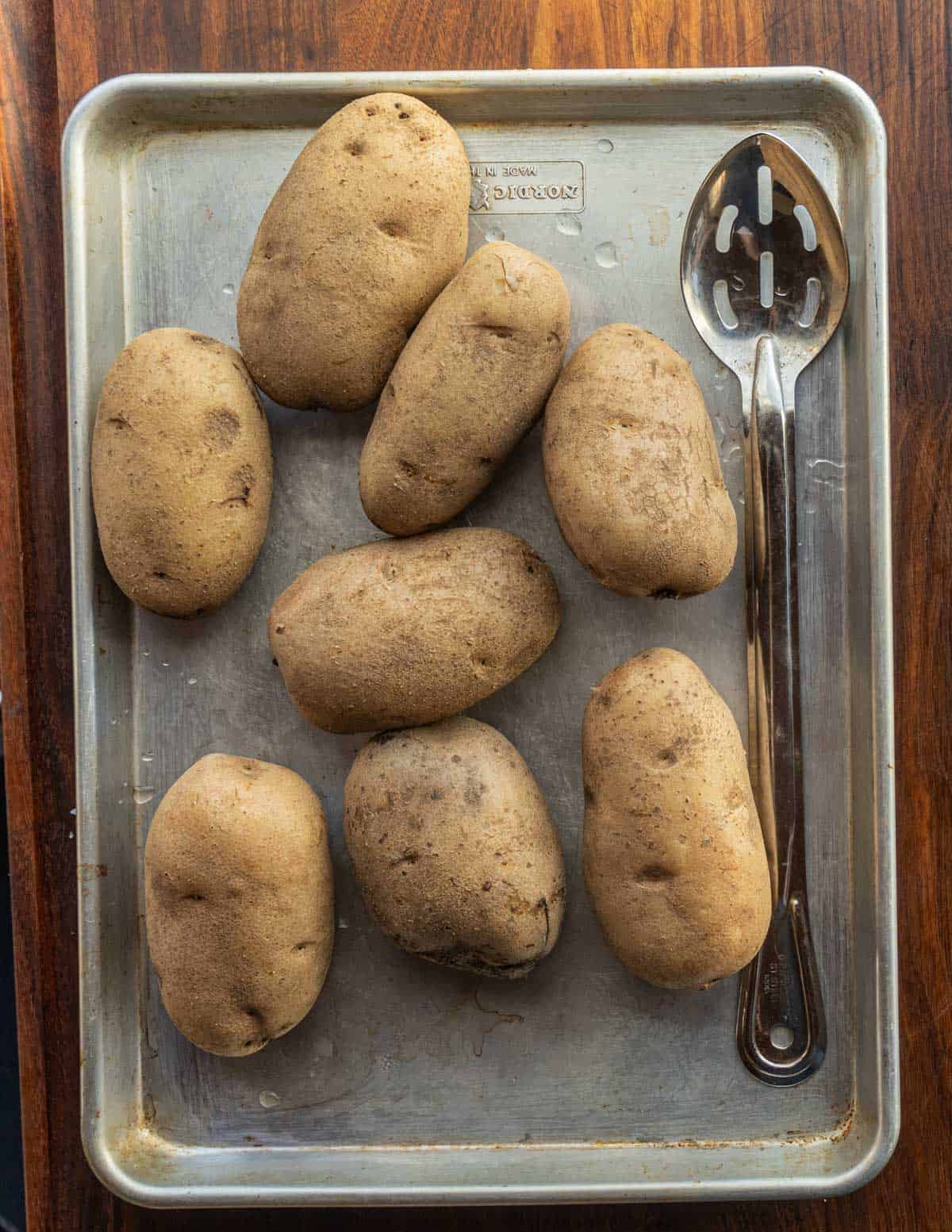
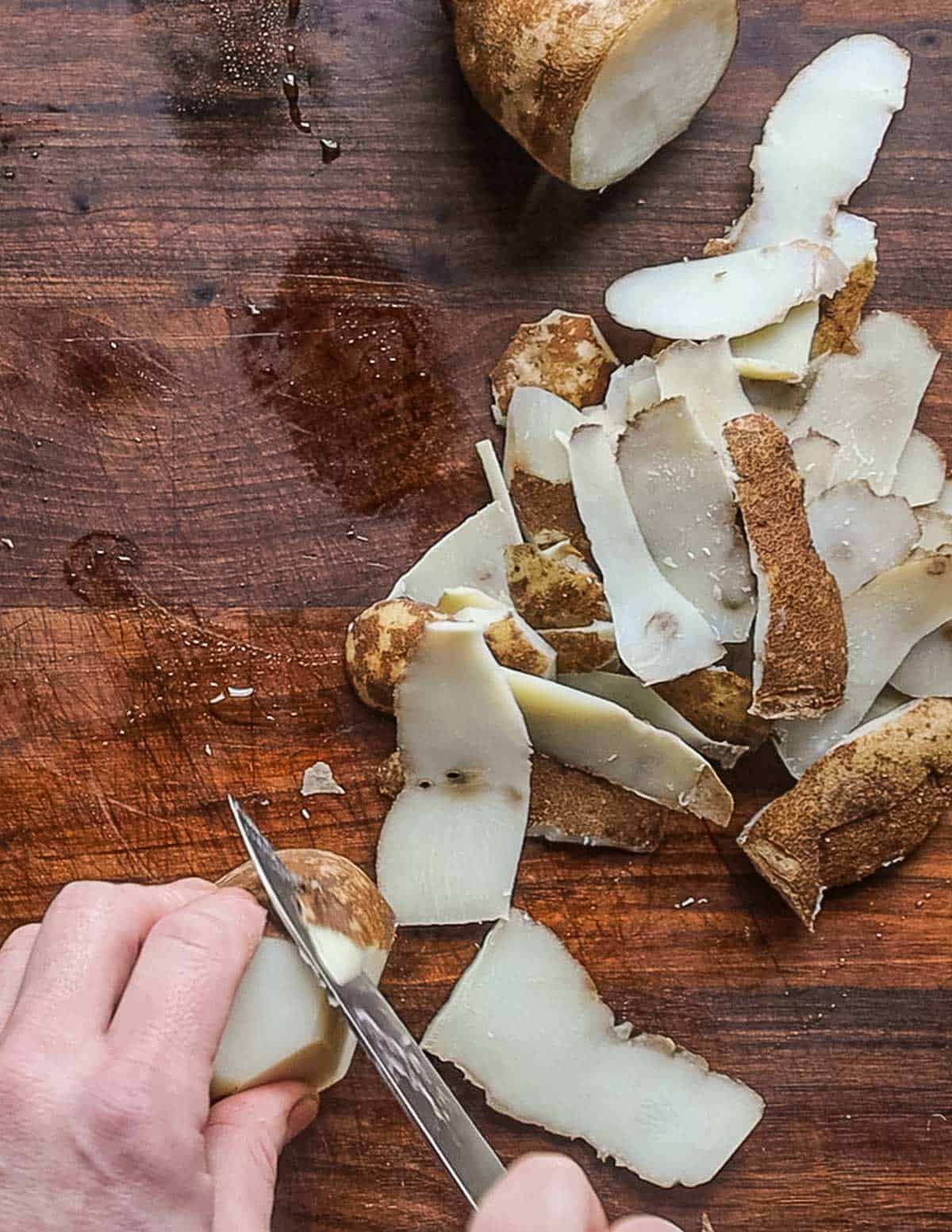
Once the potatoes are par-cooked, they need to be shredded. After shredding, you can cook them right away, keep them in the fridge for a few days, or freeze them.
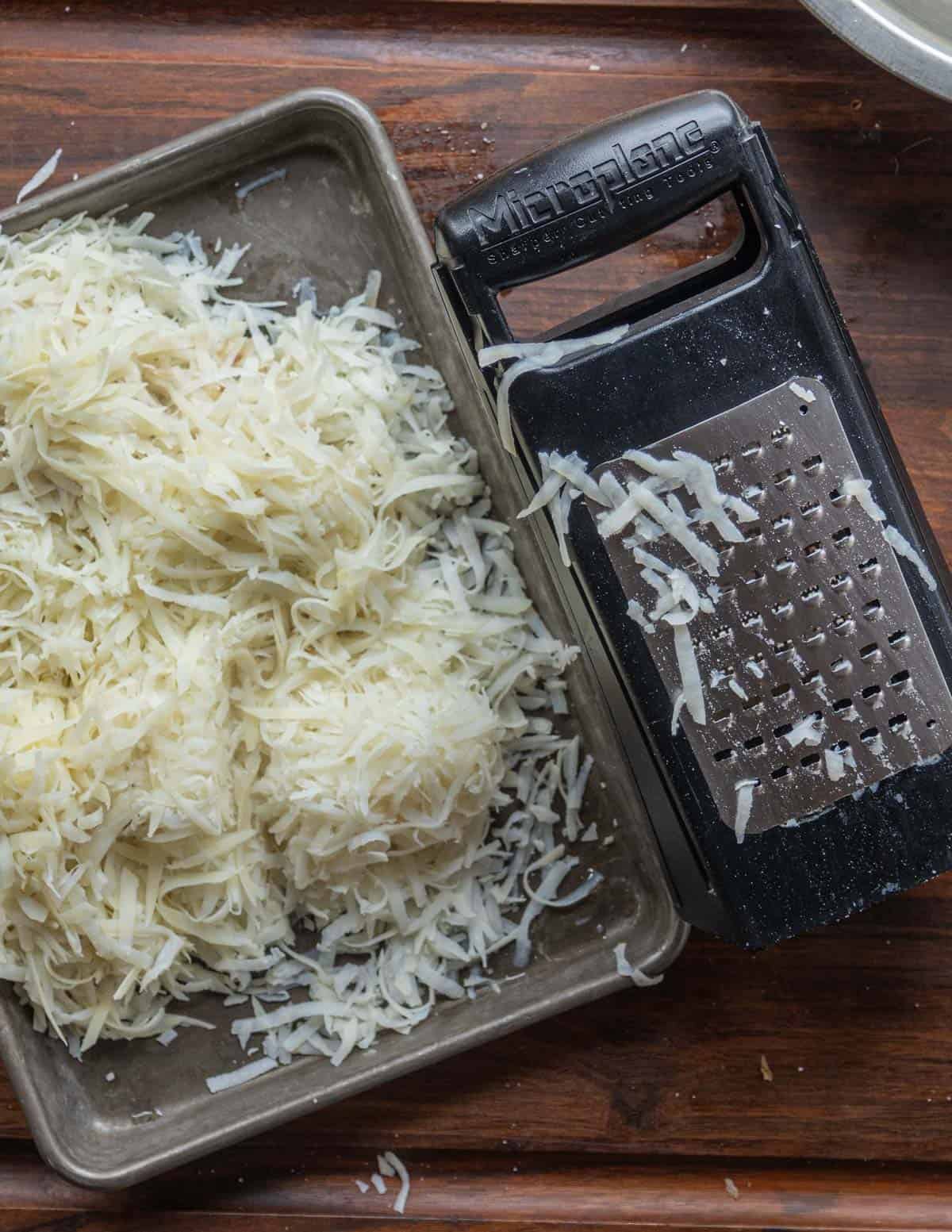
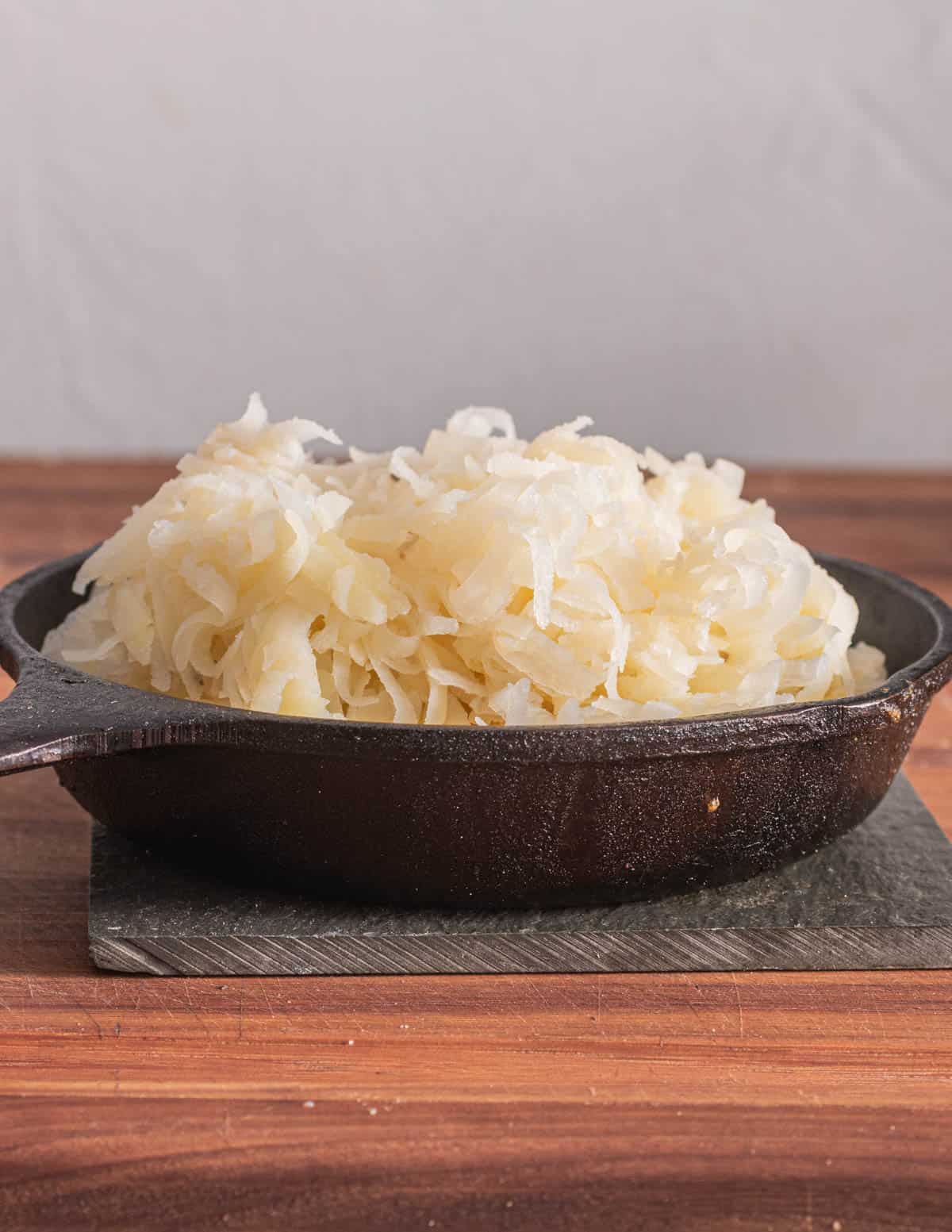
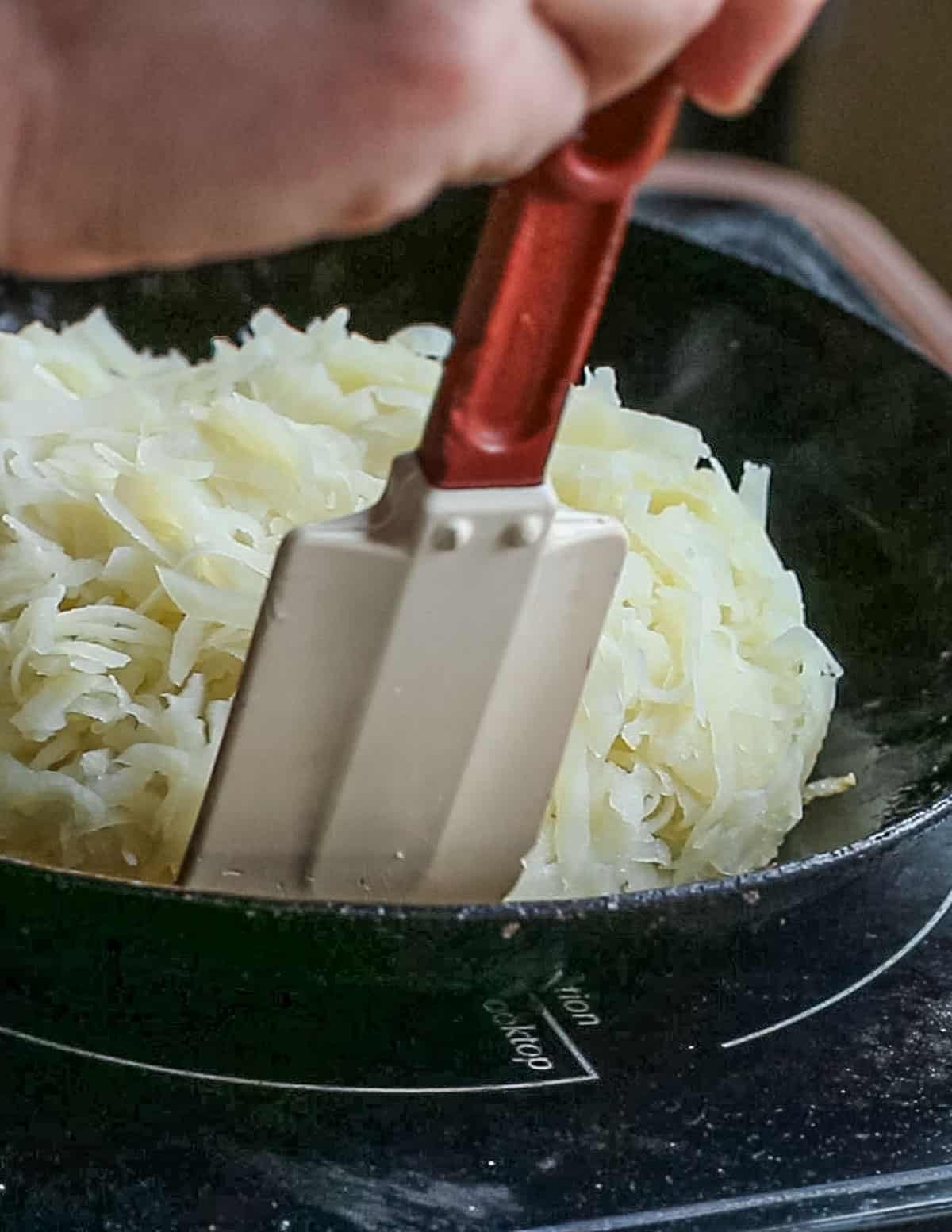
Once of the most important things is making sure you're using a non-stick pan.
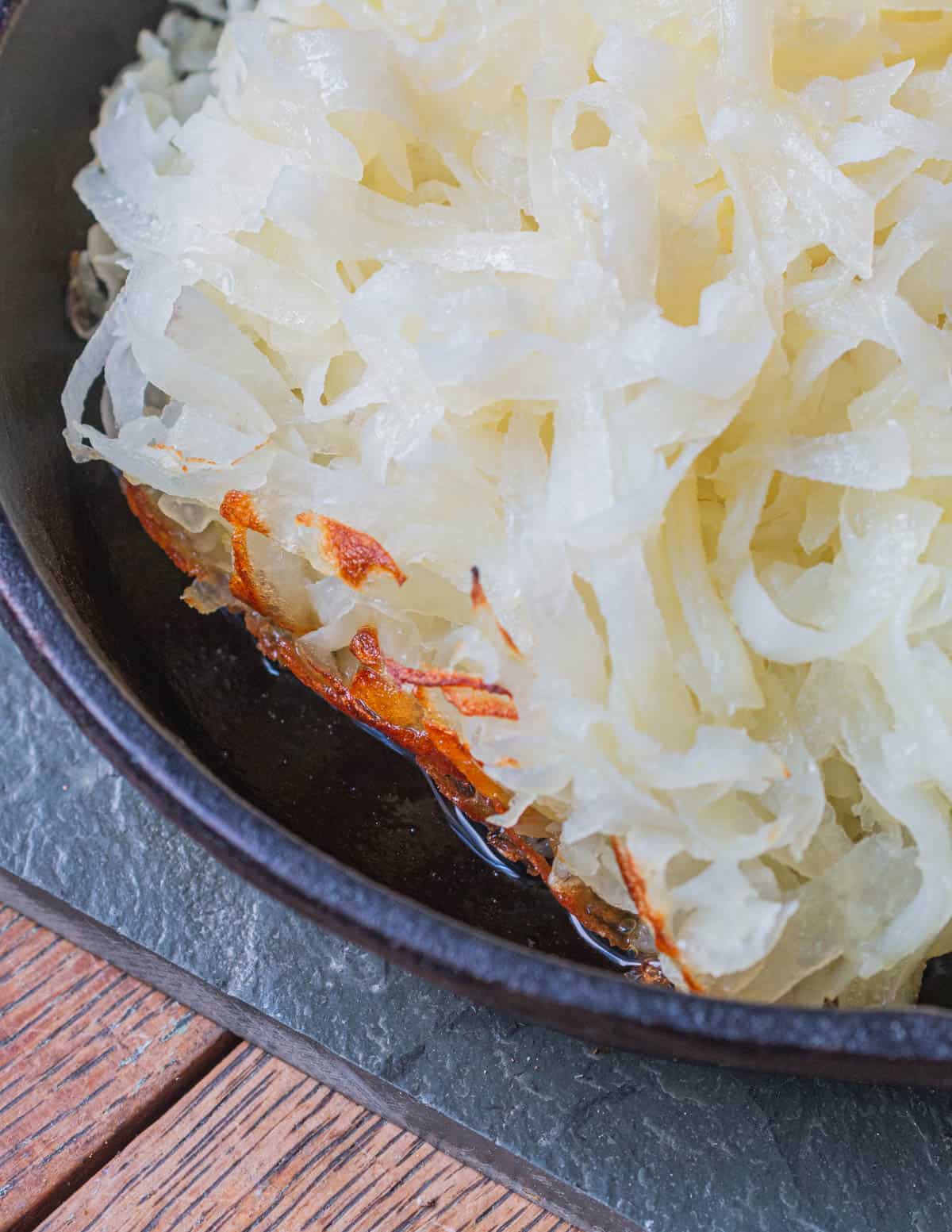
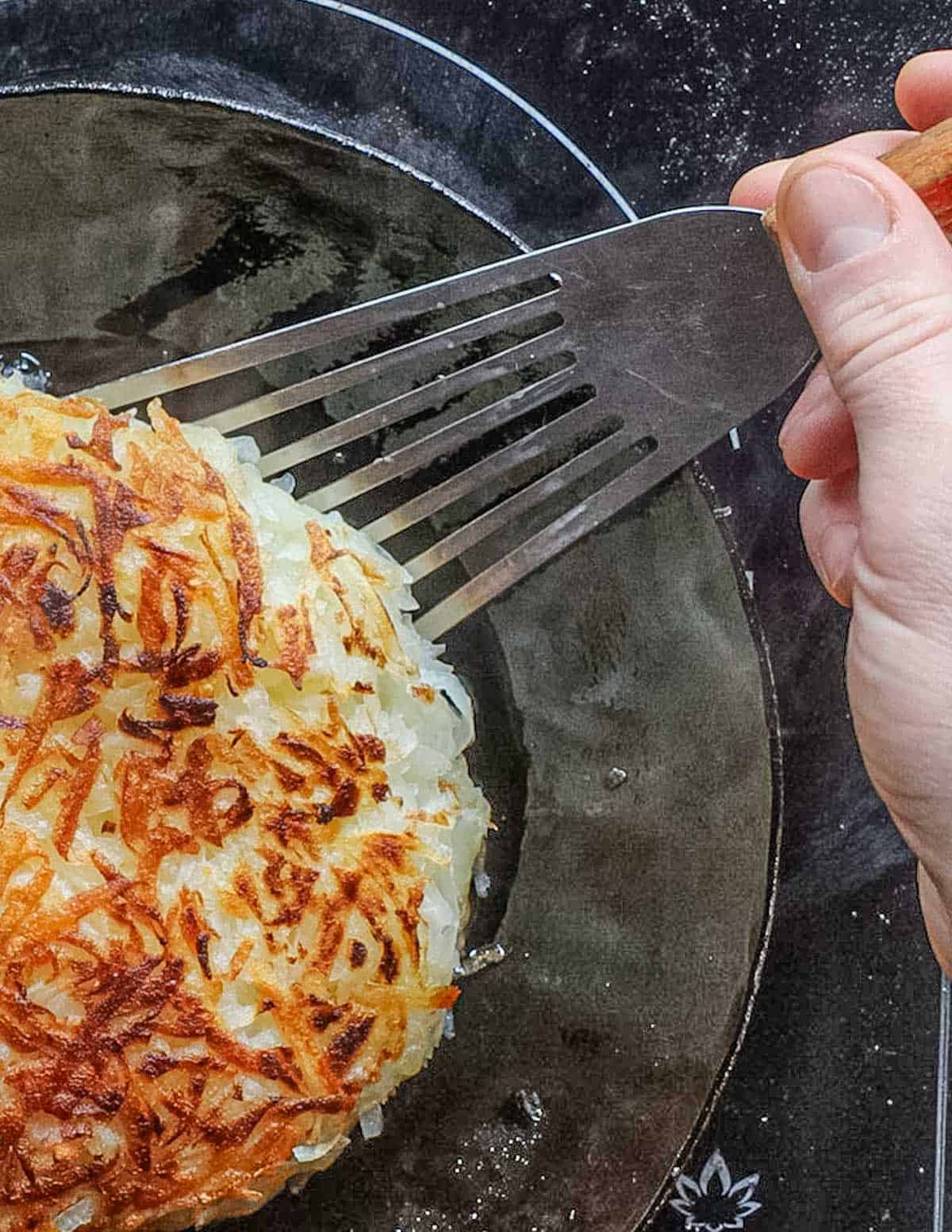

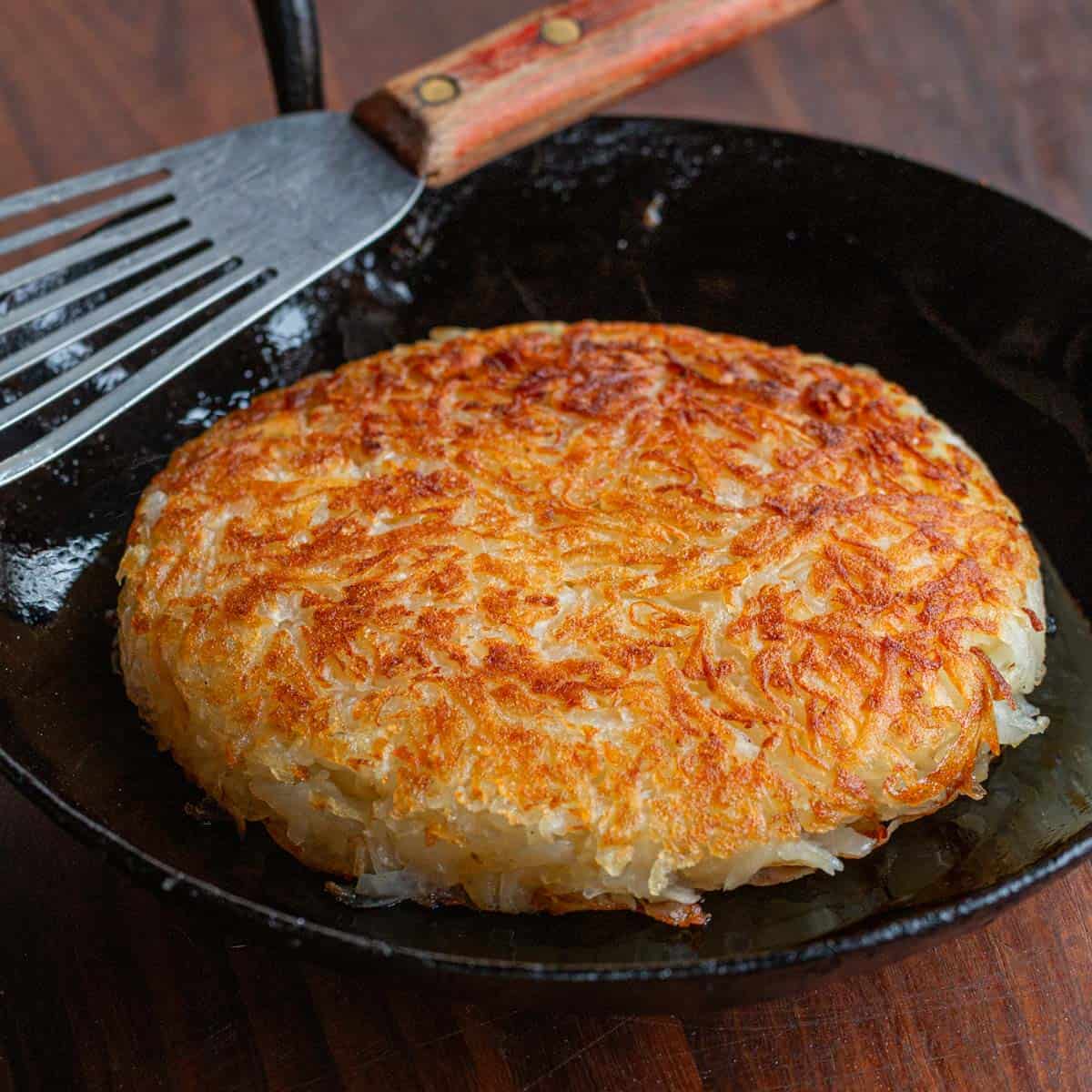
How to Make Frozen Hashbrowns Crispy
Frozen bags of shredded potatoes at the grocery store are just par-cooked, peeled, shredded potatoes. You can portion them in freezer bags to pull out and cook as needed.
If you're cooking a bag of frozen hashbrowns it can be trickier than freshly made depending on how long they've been frozen. This is because ice crystals can form on the potato strands as they freeze. Allow the frozen potatoes to thaw, then put them in a salad spinner and dry on paper towels before cooking.
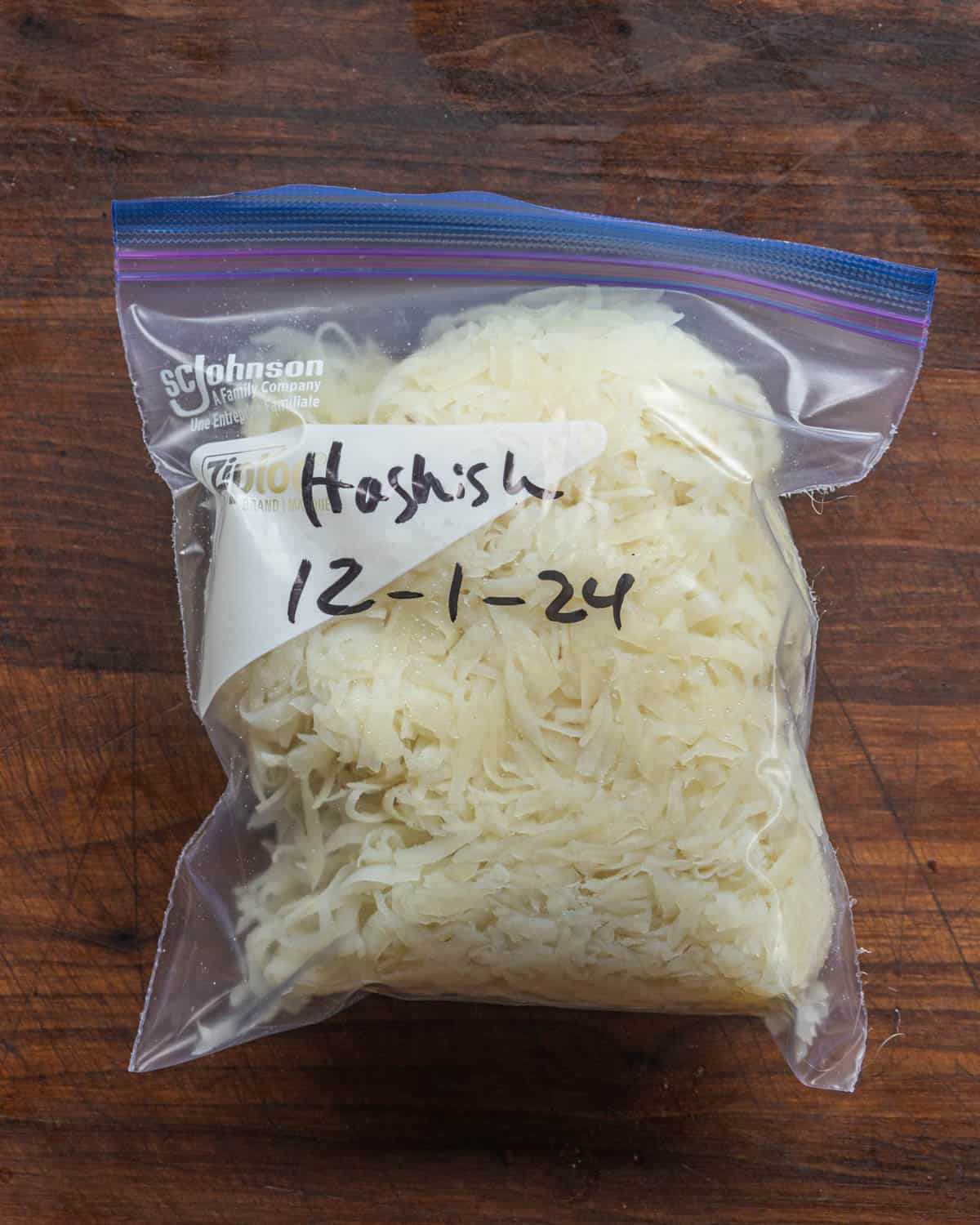
After thawing and drying the potatoes can be cooked as in the recipe below.
What To Eat With Hash Browns
One thing that always needs to be there is the highest quality salt you can find. Have some sort of fancy Hawaiian black or pink salt hanging out somewhere you got as a gift a few years ago, or a teeny bag of French fluer de sel or sel de Camargue? This is where you use that salt, and it can be the only garnish you might need.
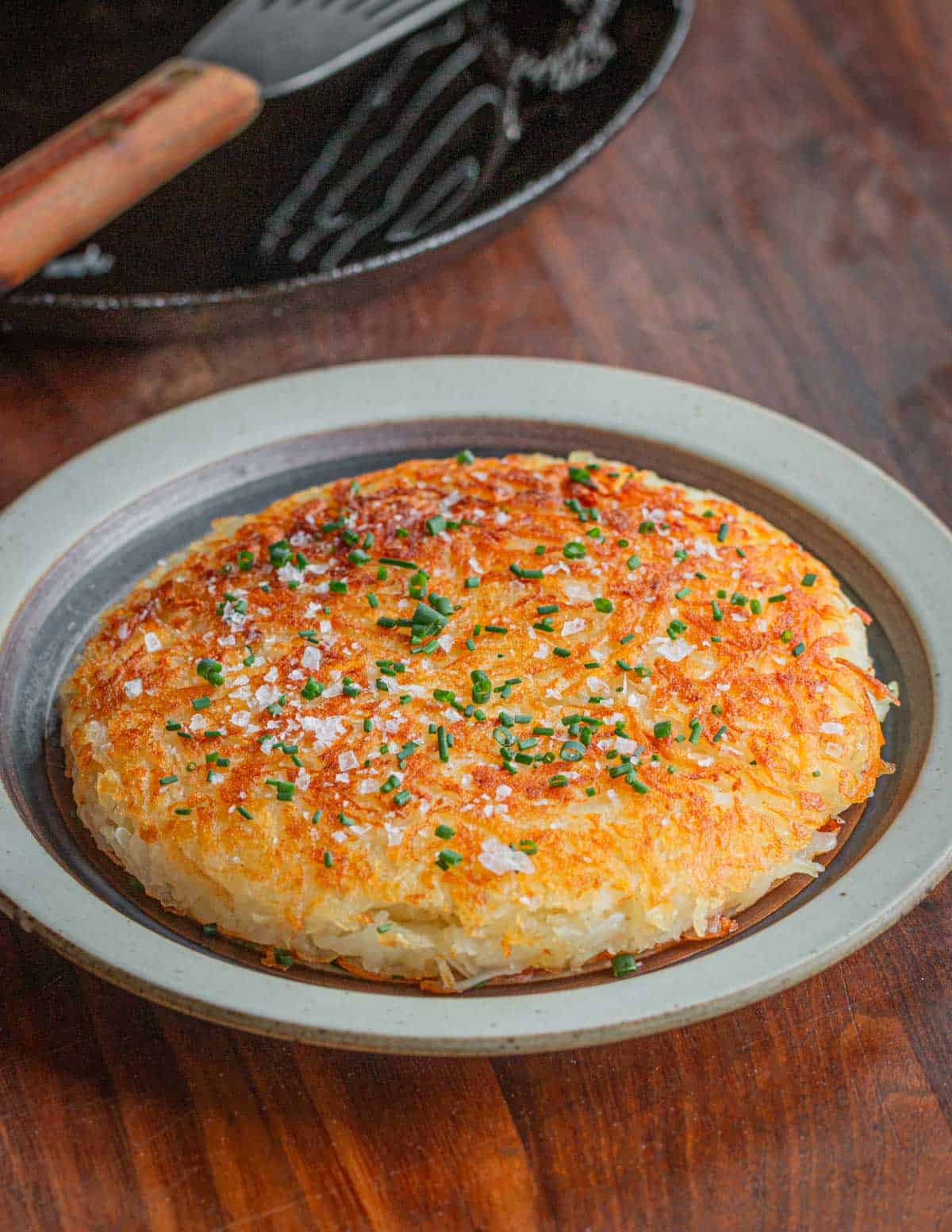
In a close second to salt for me is some sort of delicate onion-y herb, chives, garlic chives and the flowers of all of them are fantastic garnishes.
Sour cream
I put this on mine probably the least out of everything listed here, but for some people I know, it’s an absolute must, if I serve sour cream with them, It’s probably going to be one mixed with some chives.
Mayonnaise or Aioli
This and flavored or unflavored sour cream are a good way to make a big plate of hashbrowns not get boring, I like a garlicky aioli, or one mixed with a little horseradish, Tobasco, or sriracha.
Ketchup
If you have to, but at least mix it with something spicy!
Related Posts
How to Make Hashbrowns from Scratch
Equipment
- 1 8 inch Cast iron skillet or flat griddle Black Stone griddles work great too
- 1 box grater
- 1 Flexible spatula
- 1 paring knife
Ingredients
- 5 lbs Russet Potatoes
- Water as needed to cover potatoes
- Highest quality coarse salt like sea salt or kosher salt
- 3 tbsp rendered beef fat or bacon fat vegetable oil can be substituted for vegan hashbrowns
- 1 tbsp fresh cut chives
Instructions
- Put the potatoes in a pot and cover with a few inches of water. Bring the pot, uncovered to a boil, then turn off the heat right away.
- Set a timer for ten minutes, then remove the potatoes to a cooling rack and cool until you can handle them.
- Peel the potatoes with a sharp paring knife, then shred on a box grater using the largest holes.
- 12 oz shredded potatoes is enough to serve 2 people. Freeze the rest of the hashbrowns for future breakfasts.
- Heat two tablespoons of the oil on a griddle or a cast iron skillet until hot.
- For one portion, add 12 oz shredded potatoes to an 8 inch pan in a big pile without pressing them down, season with salt and some additional oil and cook until browned on the bottom, about 7 minutes on medium-high heat.
- Peek under a corner of the potatoes to make sure they're browned nicely and move as one, then flip with a spatula or in a pan.
- Brown the other side, then remove and serve immediately, sprinkling more salt and pepper over the top to finish. Sprinkle with chives and serve.
Video
Notes
Nutrition
FAQ
Generally, yes, there's no reason for them not to be. But, you should make sure to check the package if you purchase frozen ones from the store.
Hashbrowns are a good source of healthy fat if you use natural rendered animal fat. Potatoes are high in starch, which converts to sugar, so I enjoy them occasionally as a special treat.
As long as the fat used to cook the potatoes is non-animal based, yes. Make sure to ask your server or the person cooking them to make sure.
It's a good idea to thaw the shredded potatoes and spin them in a salad spinner to remove water if they've been frozen for a while, that will help them be the crispiest.
1 cup of shredded potatoes generally contain 17g carbs, 0g fat, 2g protein, and 70 calories. This does not include cooking fat, or oil, which will contribute more.


Leave a Reply